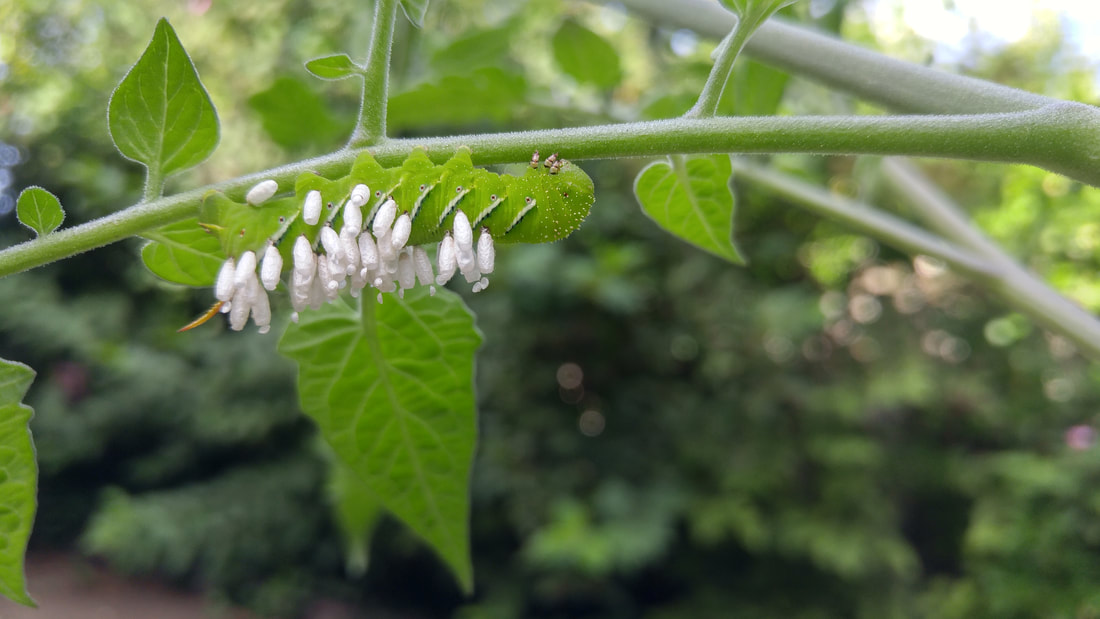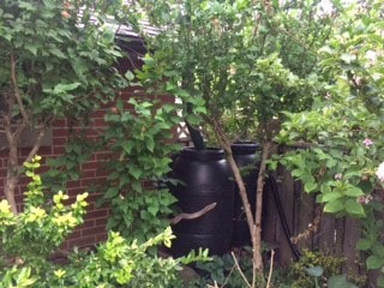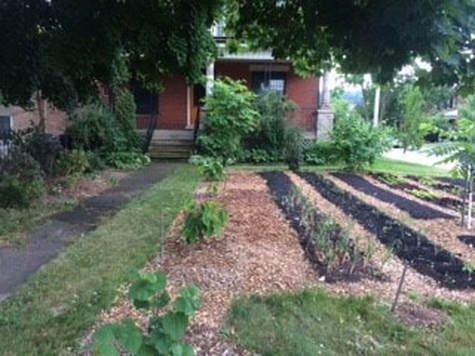 Intriguing! Terri shares a photo of a tomato hornworm she found in September on her heritage tomato plant. It had been parasitized by a parasitic wasp and the cocoons from its young remained on the hornworm's back after the young adults emerged. Intriguing! Terri shares a photo of a tomato hornworm she found in September on her heritage tomato plant. It had been parasitized by a parasitic wasp and the cocoons from its young remained on the hornworm's back after the young adults emerged. Terri Bocz, winner of the Caterpillar Awards of the Monarch Awards, 2018. Terri Bocz has always been a gardener. As a parent, when her children were young, she encouraged them to appreciate the natural world, nurturing their interest in little critters such as worms and ladybug larvae. She recalls that when she and her family lived in Mississauga, they had fennel which attracted the black swallowtail year after year: “that was my introduction. That caught me!” But it has been mostly in the last few years that Terri has intentionally been gardening for nature. Even then, “I was not a purist, most people don’t want to be purists. I used hybrids but we were advised to use natives.” Gardening for nature took a definitive direction after she heard native species gardener guru, Doug Tallamy speak about how critical caterpillars are for the development of baby birds. “It was a big factor to my awareness, learning that young birds need to be fed caterpillars so as to make bird feathers,” Terri says. She learned that in turn, most non-native plants are not digestible to caterpillars, so if an area is all non-native plants it is just like a desert with no food for the birds. Even more reason to plant native species! “Now I think about what will support the larvae. Why don’t we tell people that native plants are to support the caterpillars that birds can eat? Especially to get kids on board, since everyone wants to involve kids in gardening these days. They’ll get to their parents too. ”  Terri gets her plants from Ontario Native Plants, an online plant retailer, dedicated to supplying top quality native trees, shrub, grasses and perennials to customers all across Ontario. "I want my garden to be attractive too. I saw a black swallowtail on my parsley. I don’t cut anything back in the fall, but i do in the spring. But I want to get the timing right." Checking in with Brenda Van Ryswyk, Natural Heritage Ecologist at Conservation Halton, spring is better than fall for cutting back. "Wait until there has been a week or two of above 10 degrees Celsius weather before cutting back and that should allow the overwintering critters to emerge," Brenda suggests. "Ideally don’t cut all the way to the ground at all, as last years plant stems will be this years nesting material, then they will overwinter in the stems and emerge the following year." Brenda advices that gardeners leave 8 to 10 inches of “stubble” all the time, which is "ideal." She explains that butterflies will often pupate in the leaves at the base of plants, "so just raking them to one side and leaving them there is fine, or leave in place," (don’t toss out or mulch if you know you had caterpillars nearby). What Terri loves about her garden Terri says that things grow so well in her garden, she loves to work on/in it: "I have lovely sandy soil. It’s rewarding, planting, transplanting, finding the right site for something where it thrives, that’s the thrill. I love the colours. Pollinators are thriving here. I will get even more excited when we get the beautiful caterpillars. We will bring them in and develop them inside. That’s going to be a big thrill.” About the Caterpillar Awards and the Monarch Awards To Terri, the Trillium Awards are “a competition about neatness. There was one here, from the person we got the house. I never was able to maintain that pristine standard.” Terri says she thinks that it is a good thing that the Caterpillar and Monarch Awards have strong criteria. “I like the Awards to encourage people. The inspection of the gardens was really helpful too.”  Chris Bocz, Terri's son is an organic farmer and ecologist. He got the family planting food crops on the property at the corner of King and Kensington. It's his first growing season at this location, so the veggie patch is small, but they also have fruit trees and bushes and grape vines: "We are really kicking up the gardening aspect," Chris says. Chris loves the Monarch Awards and Caterpillar Awards because it’s bringing nature into the city. “People bought into the Trillium Awards hard, so this is changing the focus. It gives people a goal to shoot for, changing up the way we look at gardens. To me, as an ecologist and farmer, I know what’s good to put into a garden. While the family project actually started as a market garden, that is, creating permaculture in the city, “the idea was to have a pollinator native garden, a passive habitat as part of it. But I didn’t have time to do it properly, so that’s my mum’s department now. She loves wildflowers instead of lawn and she wants it to be more organized." Do the neighbours talk? “I have talked to a couple people. The cardboard? Nobody has been against it, everyone has asked questions about why we've put it down on the earth," (to create a blank slate for planting by getting rid of the grass). Chris believes that a lot of people care but they don’t have the time, "so I love this. People are pretty aware it's about providing a framework for individual gardens." When it comes to food, Chris says that there used to be a lot of food production in the city, especially with new immigrant communities. He tells me that one older gentlemen, on passing by his garden said, “It reminds me of my home in Portugal.” "We have to have people who think it is cool again. I can see pollinator plantings and food production working together hand in hand."
0 Comments
Leave a Reply. |
Archives
December 2023
Categories |
|
|
Butterflyway Hamilton: www.facebook.com/butterflywayhamilton/
Environment Hamilton: https://www.environmenthamilton.org/ Hamilton Naturalists' Club: https://hamiltonnature.org/ |

 RSS Feed
RSS Feed